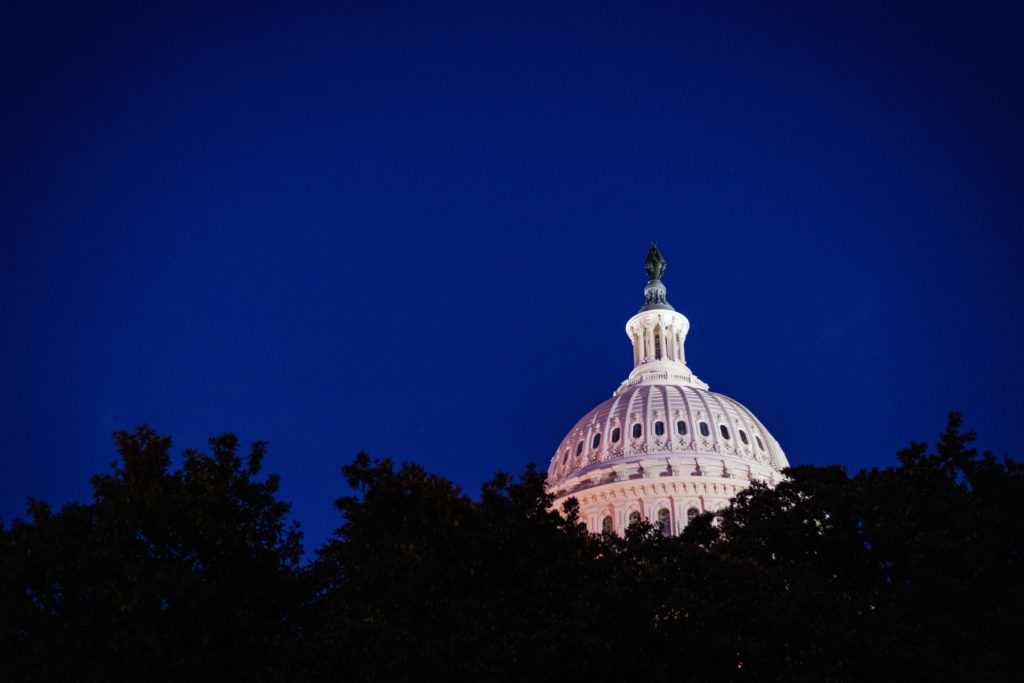GW is now offering self-administered COVID-19 tests for asymptomatic students.
Officials said in a release earlier this month that the new testing method will use “pooling” to test multiple samples at once and is intended to provide more support for students as the University seeks to reopen as much as possible in the fall. Students and experts in COVID-19 testing and higher education said self-testing could be slightly less accurate than health care provider tests, but the option could help more students get tested frequently.
“As our understanding of best practices around COVID-19 has evolved, we’ve been slowly but surely adding to our on-campus cohort – this semester we added approximately another 1,000 residential students, and at the same time we’ve added additional in-person classes and increased our on-campus research,” Scott Burnotes, the vice president for safety and facilities, said in the release earlier this month. “So we’re putting the tools in place to support a continued increase.”
Asymptomatic students are being tested at the Virginia Science and Technology Campus test center and the Marvin Center, and symptomatic testing is happening at Shenkman Hall, according to the release.
Charlie Wild, a freshman living in Potomac House, said the entire self-testing process takes less than “three or four minutes,” which he said is the same amount of time as the staff-administered tests.
He said students must make an appointment to get tested through their Colonial Health Center portal, which provides them with a barcode that is scanned when they arrive at the testing center. They are then asked to provide their birthday, which is written on their respective test tube along with their name, he said.
“Basically, you then uncap the tube, you pull out the swab, break it in half and you spin it around in a circle eight times in each nostril,” he said. “And then you put it in return to the swab, to the tube and basically put it in a little biohazard bag and then put it in the box and then you leave.”
Omer Reshid, a freshman living in District House, said he would feel more comfortable with health care providers administering the tests because he doesn’t feel confident that he performs the test correctly on himself.
“They show you what to do a little bit, but there’s no supervision,” he said. “So as a student, you don’t really care as much so you just swab a little bit and go about your day.”
Self-administered tests use nasal swabs or saliva to collect a sample, but they are processed in a lab in the same way as health care provided tests, which public health experts said offers efficient results.
He added that having more testing centers available to students instead of conducting testing in the same area could free up appointment slots and make students feel more protected from COVID-19 as they get their test.
“If they had more testing centers, instead of just one big hall, it would be a lot less crammed and you can make a lot more appointments because the appointments fill up really quick and the hall usually is packed with people,” Reshid said.
Freshman Georgia Turpin, who lives in District House, said the self-test process is more efficient than the clinician-administered tests used in the fall semester.
“The testing process during the fall semester lasted longer given students had to wait for the COVID staff to change gloves, handle the collection and clean the testing space,” she said. “Now the staff has to monitor students during the collection process and clean the areas after, so it’s more effective in regard to time.”
Experts in COVID-19 testing said self-administered tests that are processed using a pool system are typically efficient for testing a large population because they provide results quickly.
Guy Nicolette, the assistant vice chancellor of university health sciences at University of California, Berkeley, said his institution has been using self-administered tests that are analyzed using a pool system, which gathers a group of test samples to compare at once. He said a sample doesn’t need to be re-tested as long as a pool does not detect any presence of the virus.
“Pooled samples increase lab capacity dramatically and can decrease turnaround time in most cases,” Nicolette said in an email. “In a setting of low pretest probability, most samples do not need retest as most pooled samples will be negative. The higher the local rate, the more samples will need separation and retest.”
Amesh Adalja, a senior scholar at the John Hopkins Center for Health Security, said false negative results depend on whether officials use a polymerase chain reaction test, a lab technique GW uses to detect the virus’s genetic material, or an antigen test, which searches for the virus’s proteins present in the body.
He said PCR tests tend to produce more false positives because it detects minimal amounts of debris while antigen tests tend to produce false negatives, wrongly indicating a patient is not contagious.
“It’s more about the frequency and the ease of testing and what level of capture you get and what you do with that test result,” he said. “If your test result can be linked to actions of isolation, quarantine, contact tracing, that’s the key.”







